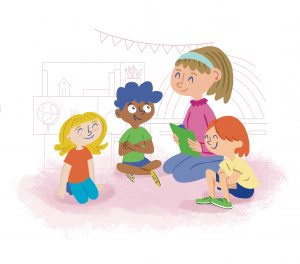Teachers and children discuss and decide together what and how they will learn

Children vote to decide the class timetable.
Teachers offer children a choice of topics to learn about. For example, if teaching the early peoples and ancient societies strand in History, hold a class vote and allow the children to decide if they would like to learn about the Celts, Romans, or Greeks.
Discuss how the children would like to learn. For example, do they prefer group work or pair work, do they want to learn outside or inside, would they prefer a visit to a library or to research information online. It will not always be possible to follow through with their suggestions, but it is still important to hear their views and explain why something is, or is not, possible.
Discus the classroom layout and seating arrangements with the children.
Involve children in school decisions, with the help of the student council

The principal asks for children’s views when writing or updating policies.
Give the student council a budget.
Bring issues discussed at staff meetings to the student council to hear their views.
The student council represents the children’s views board of management meetings.
Help children in the wider the world to enjoy their rights

Invite representatives from local community organisations and charities to talk about their work.
Get involved in improving the local community for children through initiatives such as Tidy Towns.
Learn about how children’s rights are denied around the world and how our actions here in Ireland affect others. Invite a speaker from an international development organisation to discuss climate justice.
Learn about the Sustainable Development Goals and take action in your school or community. Use this activism toolkit to plan your action.

